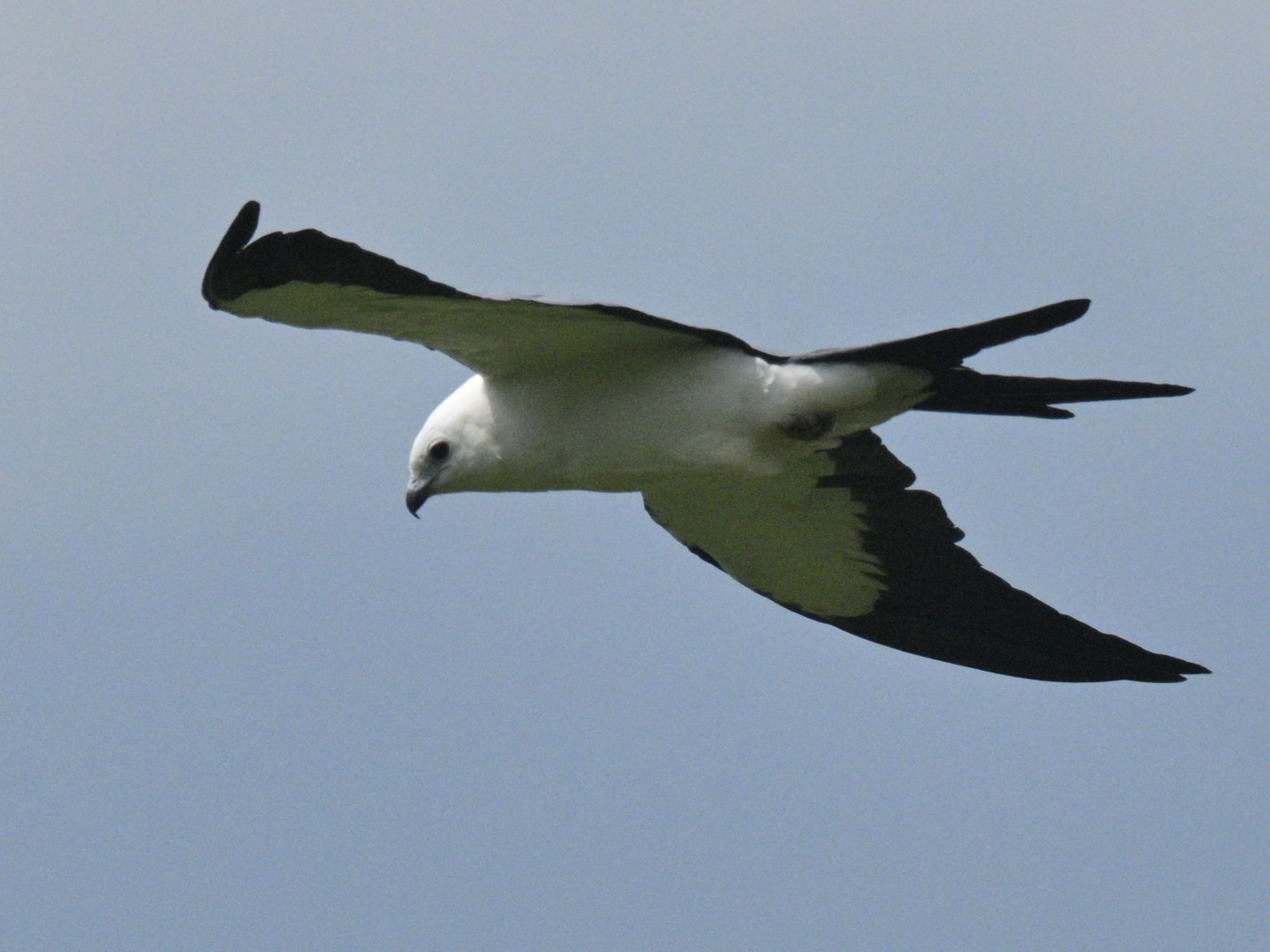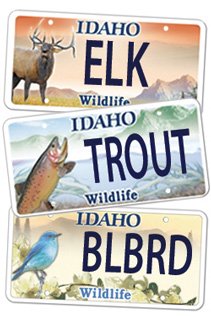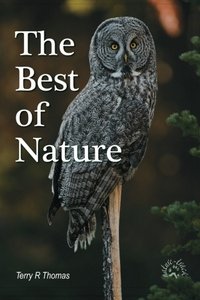Bird Bones

©Terry R. Thomas/www.nature-track.com
Flight has a high energetic cost. How do hollow bones aid in solving for that cost?
Just about everyone knows that birds have hollow bones. The humerus, clavicle, sternum, pelvic girdle, and lumbar and sacral vertebrae are all hollow. And, we were taught in elementary school that these hollow bones are lighter and less dense in order to reduce the metabolic cost of flying (I’m sure my 6th grade teacher used those words).
Scientists, however, have long realized that bird skeletons and those of equal-sized mammals actually weigh the same. In other words, the skeleton of a two-ounce bird weighs the same as the skeleton of a two-ounce rodent. So, even though the bird bones are hollow, the weight is the same.
A bat scientist at the University of Massachusetts Amherst compared several of the bones of birds, bats, and rodents, and found that bat bones are the densest, then bird, then rodent. That seems to fly in the face of lightweight bones in order to fly. And bats, some of the world’s greatest fliers, do not have hollow bones.
Dense bone is stronger per unit than less dense bone. It is stiffer and less flexible as well. So, a bird bone that is dense does not have to be solid to still have the strength it needs to perform its functions as a support system. Within these bones there is also structures, like the struts inside an airplane wing, that add more strength.
So, what is the purpose of creating empty space in the bones? Here is where it gets interesting. Flight can require a lot of energy. Some of that energy is supplied by food. However, to keep cells functioning at their top level, flight has a high oxygen demand. For that reason, birds have, in addition to lungs, an air sac system.
Although the number is a bit variable, most birds have nine air sacs. Air sacs are not vascularized to exchange oxygen in the blood, they simply move air through the system like a set of bellows. The air sac system ensures a continuous flow of fresh air through the lungs — both during inhalation and exhalation. In mammals the air flows in and then out of the same piping system—this is called a bidirectional system and mixes fresh air with “old” air. In birds, air flows in one direction (it still enters and leaves via the trachea, but goes to the posterior air sacs and moves forward) with a steady supply of fresh air.
Finally, here is where the hollow bones come in. As a chick develops, its air sacs attach to these bones and become incorporated into them. Thus, the bones themselves become storage for extra oxygen in what is called pneumatization.
Since 1638 when Galileo first described bird skeletons as lightweight with hollow bones, it just seemed to make sense that hollow meant lighter in weight. This research, while 15 years old, demonstrates that just because something seems to make sense doesn’t make it correct. Bird bones are strong, stiff, and perfect for flight not because they are lightweight, but because they help with providing the bird with plenty of oxygen to meet the demands of flight. An internet search will still turn up plenty of explanations about how hollow bones make them lighter and that is their benefit to flight. But, as Paul Harvey used to say, now you know the rest of the story.
Help Idaho Wildlife
When we traveled across the state in October 2017, we visited most of the Idaho Department of Fish and Game wildlife management areas. Most of the vehicles we saw using the wildlife management areas did not have wildlife plates. Buying wildlife plates is a great way for non-hunters and hunters alike to support wildlife-based recreation like birding.
C'mon folks, let's help Idaho's wildlife by proudly buying and displaying a wildlife license plate on each of our vehicles!
See below for information on Idaho plates. Most states have wildlife plates so if you live outside Idaho, check with your state's wildlife department or vehicle licensing division for availability of state wildlife plates where you live.
And tell them that you heard about it from Nature-track.com!

Wildlife License Plates
Great news! as of 2024, there are three NEW designs for license plates. They still are bluebird, cutthroat trout and elk, but they are beautiful.
Idaho Wildlife license plates provide essential funding that benefits the great diversity of native plants and wildlife that are not hunted, fished or trapped—over 10,000 species or 98% of Idaho’s species diversity. Game species that share the same habitats (such as elk, deer, antelope, sage-grouse, salmon, trout) also benefit from these specialty plates.
No state tax dollars are provided for wildlife diversity, conservation education and recreation programs. Neither are any revenues from the sale of hunting or fishing licenses spent on nongame species. Instead, these species depend on direct donations, federal grants, fundraising initiatives—and the Idaho Wildlife license plates.
Both my vehicles have Bluebird Plates. I prefer the bluebird because the nongame program gets 70 percent of the money from bluebird plates, but only 60 percent of the money from elk and trout plates - 10 percent of the money from elk plates supports wildlife disease monitoring and testing programs (to benefit the livestock industry) and 10 percent from cutthroat plates supports non-motorized boat access.
Incidentally, in 2014, the Idaho Legislature denied the Department of Fish and Game the ability to add new plates or even to change the name of the elk and cutthroat plates (very specific) to wildlife and fish plates, a move that would have allowed for changing images occasionally and generating more revenue. It would seem that they believe that we Idahoans don't want a well funded wildlife program.
I think it is time we let the Legislature know that Idahoan support wildlife funding and that we would like to see these generic plates come to fruition.

"WOW. What a phenomenal piece you wrote. You are amazing." Jennifer Jackson
That is embarrassing, but actually a fairly typical response to my nature essays. Since The Best of Nature is created from the very best of 16 years of these nature essays published weekly in the Idaho Falls Post Register (online readership 70,000), it is a fine read. It covers a wide variety of topics including humorous glimpses of nature, philosophy, natural history, and conservation. Readers praise the style, breadth of subject matter and my ability to communicate complex and emotional topics in a relaxed and understandable manner.
Everyone can find something to love in this book. From teenagers to octogenarians, from the coffee shop to the school room, these nature essays are widely read and enjoyed.
Some of the essays here are my personal favorites, others seemed to strike a chord with readers. Most have an important message or lesson that will resonate with you. They are written with a goal to simultaneously entertain and educate about the wonderful workings of nature. Some will make you laugh out loud and others will bring a tear to the eye and warm your heart.
Readers Write:
"You hit a home run with your article on, Big Questions in Nature. It should be required reading for everyone who has lost touch with nature...great job!" Joe Chapman
"We enjoyed your column, Bloom Where Planted. Some of the best writing yet. The Post Register is fortunate to have your weekly columns." Lou Griffin.
To read more and to order a copy, click here or get the Kindle version
Copies are also available at:
Post Register
Island Park Builders Supply (upstairs)
Barnes and Noble in Idaho Falls
Harriman State Park, Island Park
Museum of Idaho
Valley Books, Jackson Wyoming
Avocet Corner Bookstore, Bear River National Wildlife Refuge, Brigham City, Utah
Craters of the Moon National Monument Bookstore, Arco, Idaho